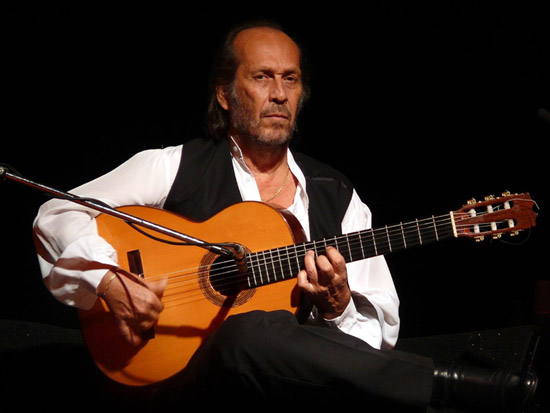Music: Modern Forms
Flamenco Nuevo
Present-day Spain respects many flamenco musicians, traditional music troupes, and pop singers and bands across all genres. Initiated by la movida, a cultural movement that began in the 1980s, Spanish pop music has grown from being somewhat derivative to something all its own, touching rock, electronic, hip-hop, and most every other musical flavor throughout the world. Flamenco Nuevo, or New Flamenco, began in the 1970s with Lola y Manuel, and recognizes greats such as Camarón de la Isla and Paco de Lucía.
Yé-yé, Flamenco Fusions, and Other Pop
The Franco regime resulted in a poor environment for the development of Spanish pop music. Today, however, the genre thrives and exhibits clear influence from European and other Western pop genres.
Among the pop genres significantly developed in Spain is yé-yé, which also has roots in Quebec and origins in France. This primarily female musical movement caught the attention of Europe and gained significant popularity in Japan. Famous artists are the one-hit wonder Massiel, from Madrid, who won Eurovision in 1968, and Karina from Andalucía, who was named the best yé-yé singer of 1966. Though young females were the faces of yé-yé, men (particularly Serge Gainsbourg of France) played a significant role behind the scenes of the movement.
Others have fused traditional flamenco with contemporary genres. Ojos de Brujo, a band from Barcelona, is known for bringing together hip-hop and flamenco elements to create a unique sound. Their songs touch on social and other themes that appeal to a youthful audience.
Manu Chau is a multilingual artist of Basque and Galician heritage (based in Paris) who embraces many genres, including alternative rock, ska, punk, reggae, and salsa. In addition to being a vocalist, he also plays the guitar, bass, and keyboard.
Some of Spain's most popular contemporary artists include David Bisbal, Alejandro Sanz, Miguel Bosé, and father and son singer-songwriters Julio Iglesias and Enrique Iglesias. Among the country's most famous pop and rock bands of the late 20th and early 21st centuries are Radio Futura, Mecano, La 5a Estación, and La Oreja de Van Gogh.
Article written for World Trade Press by Cam Waller.
Copyright © 1993—2024 World Trade Press. All rights reserved.

 Spain
Spain 
